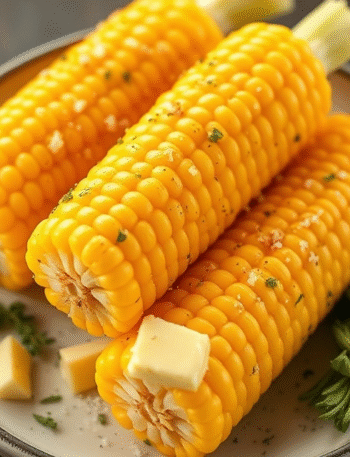Simple, Sincere to Itself Mexican Green Sauce

To prepare a true Tomatillo Salsa Verde, cook your fresh tomatillos (by boiling, roasting or pan-searing), and then blend with onion, cilantro, jalapeño or serrano peppers, lime juice and salt until smooth. The result is a tangy, vivid green salsa that works well with tacos, grilled meats, enchiladas – really anything you serve it with; this isn’t too far off from how I’d imagine Europe tastes after months in the lockdown-style yellow prison of Zuppa Toscana or Tomato Sauce a La Turkey.

This recipe doesn’t make a traditional guacamole (with roasted tomatoes and smoked chiles) although to my taste they are similar – safe to take any batch near people already huddled around one.
Total time: 35 minutes
Makes: 3 cups (about 24 servings)
Nutrition: ~20 to 25 calories per 2 Tbsp serving
Tomatillo Salsa Verde, the classic “green sauce” of Mexican table tops: slightly tart, a little sweet, full of flavor (and not to be confused with the green sauce that resembles guacamole). Misunderstood to be made from green tomatoes, it’s really the tomatillo (Physalis philadelphica), a small green fruit in a papery husk and tart cousin of the tomato that stars in this salsa.
This 2025, updated and opinionated guide allows more than preserving Mexican tradition; it provides three easy ways to cook the kernels – boiling, pan-roasting, or oven-roasting. You pick your level of flavor. Whether you’re topping your favorite enchiladas or just using it as a zippy dip, this salsa is always prepared in minutes for great tasting and authentically fresh flavor.
Ingredients

| Ingredient | Quantity | Notes |
|---|---|---|
| Tomatillos | 1½ lb. (about 12 medium) | Husked, rinsed to remove sticky coating |
| White onion | ½ cup, chopped | Adds mild sweetness |
| Garlic cloves | 2 (optional) | Roasted (or raw for depth) |
| Green cilantro | ½ cup, chopped | Stems and leaves for herbal brightness |
| Lime juice | 1 Tbsp, fresh-squeezed | Balances acidity |
| Jalapeño or serrano peppers | 2, stemmed and seeded | Serranos if you like more heat |
| Salt | To taste | Enhances overall flavor |
| Oil (for pan method) | 1 tsp (optional) | Caramelizes tomatillos |
Step-by-Step Cooking Process
1. Prepare the Tomatillos

Peel away the husks and rinse well to remove any sticky residue. Pat dry with a paper towel. If you are roasting or pan-searing, halve the tomatillos so they brown uniformly.
2. Choose Your Cooking Method
Oven Roasting (Deep Flavor)

Heat broiler and set rack 6 inches from heat. Lay tomatillos cut-side down on a foil-lined tray with garlic (in skin). Broil 5 to 7 minutes or until skins blister and char. Let cool before blending.
Pan Roasting (Smoky & Quick)

Place a dry or lightly oiled skillet over medium-high heat. Add tomatillos and sear until blackened and softened, 3/4 minutes per side.
Boiling (Classic & Easy)

Place the tomatillos in a saucepan, add water just enough to cover them and put over medium-high heat. Cover and cook for 5 minutes, or until slightly softened and olive green. Remove with a slotted spoon.
3. Blend the Salsa

In a blender or food processor, combine the boiled tomatillos, onion, cilantro, lime juice, and peppers (and garlic if using). Pulse until smooth but still slightly chunky. Taste and season with salt.
4. Chill and Serve

Cool salsa, then refrigerate for 30 minutes to chill and let flavors develop. Serve with tortilla chips, drizzle on tacos al pastor, spoon over grilled meats and enchiladas.
Chef’s Tips & Variations

- Make it creamy by adding avocado to a tomatillo-avocado salsa.
- Roast garlic or poblanos for smokiness.
- Replace jalapeños with serrano peppers for a stronger bite.
- De-seed and de-membrane the chilies for less heat.
- Keep in an airtight container for up to 5 to 7 days in the fridge, or up to 2 months in a freezer (texture will be softer after freezing).
Nutrition Facts (Per 2 Tbsp Serving)
| Nutrient | Amount | Benefit |
|---|---|---|
| Calories | ~22 kcal | Low-calorie condiment |
| Fat | < 1 g | Trace – optional oil |
| Carbohydrates | 4–5 g | Natural plant sugars |
| Protein | < 1 g | Light and plant-based |
| Fiber | 1 g | Aids digestion |
| Vitamin C | High | Supports immune health |
| Sodium | Variable | Adjust to taste |
(Values estimated via USDA FoodData Central 2025 and Simply Recipes nutrition data.)
Serving Size & Pairings

Portion size: 2 Tbsp (≈22 calories)
Yield: 3 cups (≈24 servings)
Pairs best with:
- Tacos, burrito bowls, and fajitas
- Grilled fish, shrimp, or chicken
- Chilaquiles and breakfast eggs
- Nachos and quesadillas
Pro Tip: Stir 1 cup of salsa verde with shredded rotisserie chicken, sprinkle cheese on top, and bake for speedy enchiladas suizas – the all-time Mexican classic that never fails to delight.
Conclusion

Tomatillo Salsa Verde – Easiest-For-The-Most-Taste.
Something that simple can taste this vibrant. With a few pantry staples and three quick ways to cook them, you can make fresh homemade salsa that’s restaurant-level delicious, perfect for everything from tacos to breakfast eggs.
Its sour brightness cuts through the richness of meats and spices – a staple in both classic Mexican cuisine and modern kitchens alike. Whether you simmer for freshness, roast for smokiness, or pan-sear for quick depth, any version of a fire-roasted salsa verde results in a sauce that’s bold, balanced, and deliciously legit.
FAQs
Q1. What are tomatillos? And what is the difference between tomatillos and green tomatoes?
Tomatillos are a unique fruit enveloped in a papery husk and taste big with a tart, citrus flavor. Green tomatoes are just immature red ones – they are firmer and less tangy.
Q2. May I use canned tomatillos for salsa verde?
Yes. Drain and rinse before blending. The taste will be milder and less acidic than fresh tomatillos.
Q3. How do I reduce the spiciness in salsa verde?
Clean seeds and membranes from chilies or use a single pepper. You can also balance heat by adding more tomatillos or a few slices of avocado.
Q4. How long does salsa verde keep?
It keeps up to 5/7 days tightly sealed in the fridge, or up to 2 months in the freezer for best flavor and safety.
Q5. Can I ferment tomatillo salsa verde?
Yes. Fermenting for about 2 days at room temperature, then refrigerating, adds tangy depth and probiotic benefits. Always follow safe fermentation guidelines.
Q6. Is salsa verde healthy?
Absolutely. It’s low in fat and calories, high in Vitamin C, antioxidants, and fiber — basically, it’s like a healthy vegan dipping sauce.






